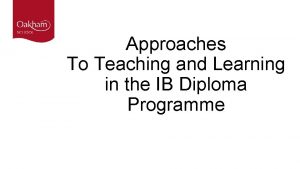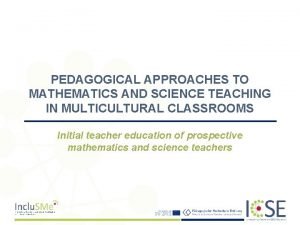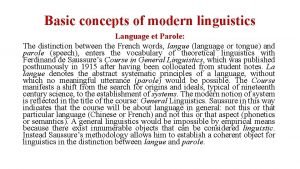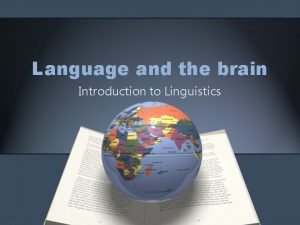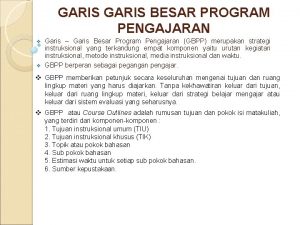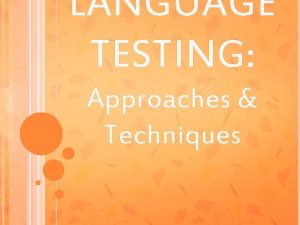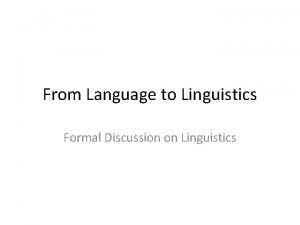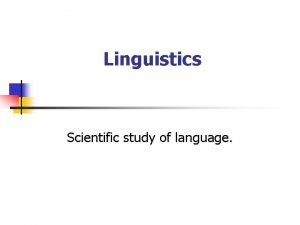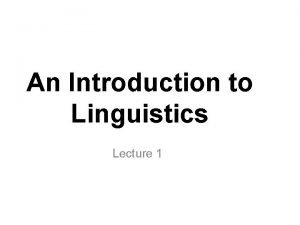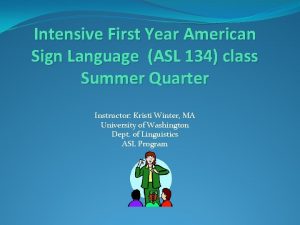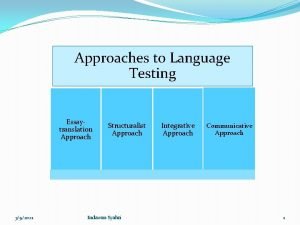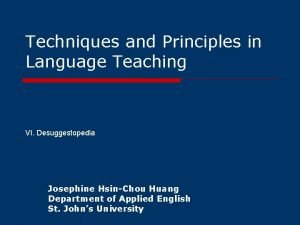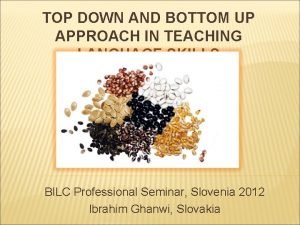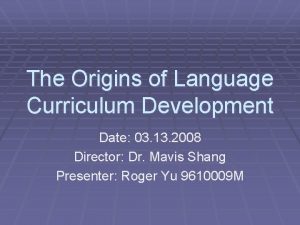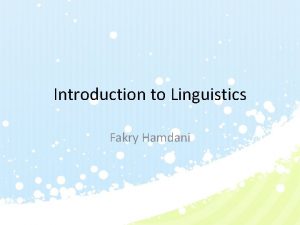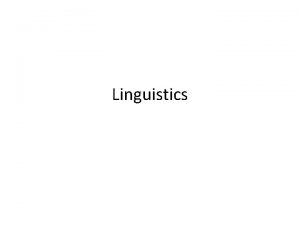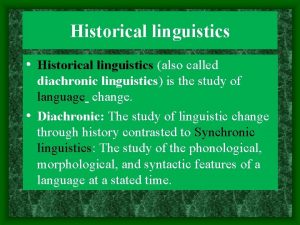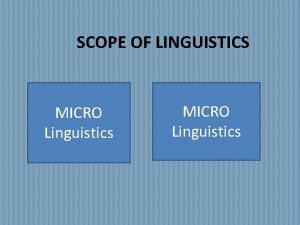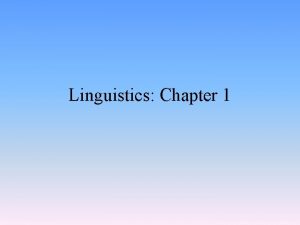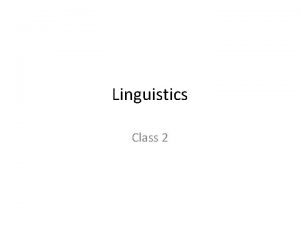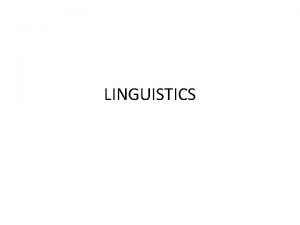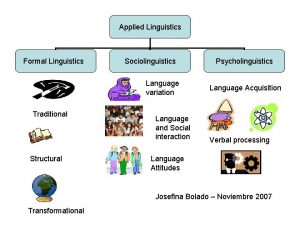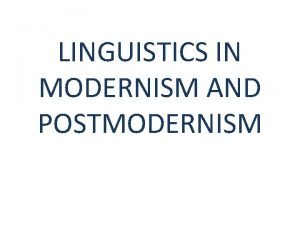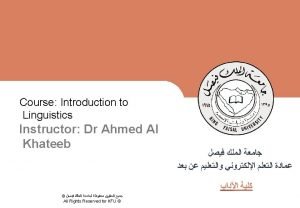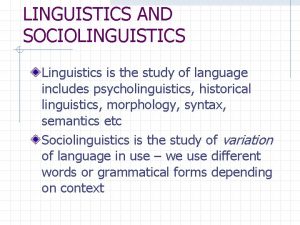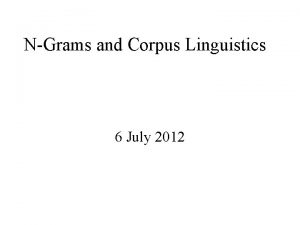Linguistics and language teaching outline Approaches to language



















- Slides: 19

Linguistics and language teaching 组员:马彬艳 王皓 郑万娟 孙涟漪 高勇

outline • • • Approaches to language teaching 1, An overview of language teaching a, History b, Different approaches 2, The relation of linguistics to language teaching. • a, Relation • b, The definition of applied linguistics • C, language teaching method and linguistic theories.


B,Different approaches • 1,The natural method (direct method): 自然法/直接法 • Introduction: The Natural Approach was developed by Tracy Terrell and Stephen Krashen, starting in 1977. It came to have a wide influence in language teaching in the United States and around the world.


• 2,the structural approach:(结构 法) • Introduction: It is formulated with behaviorist psychology as its psychological basis and structural linguistics as its linguistic basis. • 这是行为主义心理学制定作为其心理基 础和结构主义语言学的语言基础。

• The theory is then extended to analyzing language behavior. According to Skinner, imitation plays an important role in language learning. A child learns a language by imitating the language of his or her environment. • 该理论进而扩展到分析语言的行为。根 据斯金纳的观点,模仿在语言学习中扮 演着重要角色,孩子在学习语言时是通 过模仿他所接触到的人。

• Two factors are crucial for the child’s mastery of the language: • 1, the frequency with which a certain utterance is used in the child’s environment孩子们使用某种话语的频率。 • 2, Approval on the parts of parents and teachers. 父母以及老师的赞许以及 纠正。

• 3, The mentalistic approach 智力法 • Introduction: Mentalistic approach to language acquisition stresses the role played by the learner’s mental mechanism. 智力法对语言的习得是强调 学习者的智力因素。 • Chomsky’s view: 1, Everyone is born with a Language Acquisition Device, which enable child to make hypotheses about the structure of language in general,and the structure of the language being

• learned in particular. These primarily subconscious hypotheses are tested in the use of language and continuously matched with the new linguistic input which the child obtains from the immediate environment. 每个人天生就具有学习语 言的能力,一般是通过对语句的假设学 习语言并且与新接收到的语言相结合完 善自我的语言认知。

• 2, As one of the pedagogical implications of this theory, the use of the learner’s native language in the study of a second or foreign language is justified. It is not only necessary but also inevitable. 作为对这一理论的教 学启示之一,学习者的母语在第二语言 或外语学习的使用是合理的。它不仅是 必要的,也是不可避免的。


• 5, The Communicative Language交流法 • Communicative Language Teaching is a popular approach to language teaching which emphasizes real-life use of language and placing students in reallife language situations. 交流法是一种 很流行的教学方法,它强调现实生活中 语言的应用,并将学生置于现实生活的 环境中。

• The Relation of Linguistics to Language Teaching • a, Relation: Both linguistics and language teaching take language as their subject. The achievements of linguistic inquiry can be utilized for effective language teaching. 语言学和 语言教学都是以语言为主题。语言学的 应用可以提高语言教学的效率。 • Bridge:Applied linguistics.

• The definition of applied linguistics • In the broad sense, applied linguistics refers to the application of linguistic knowledge to the solution of various problems. • In the narrow sense, this term is used to refer to language teaching, particularly the teaching of a second language or a foreign language.

• Applied linguistics in the narrow sense exploits knowledge in three domains: • 1, Linguistic theories and linguistic descriptions语言学理论和语言描述 • 2, Linguistics-related disciplines语言 学相关学科 • 3, Education-related disciplines教育 相关学科

• Changes in language teaching methods throughout history have reflected the development of linguistic theories语言教学方法的改变反映了语 言学理论的发展。 • A, Grammar-translation method: linguistics was characterized by traditional grammar. • B, the direct method: based on several linguistics assumptions. • C, the situational approach: linguistic analysis should be related with the “ context of situation”

• D, functional-notional approach: based on linguistic functions and teaching is organized around notional items. • E, the communicative approach: the linguistic competence of a learner of a language not only refers to his or her ability to produce grammatical sentences but also to his or her ability to use the language approprately

THANKS FOR YOUR ATTENTION!
 Language
Language Theoretical linguistics vs applied linguistics
Theoretical linguistics vs applied linguistics Approaches to learning ib dp
Approaches to learning ib dp Outline critical approaches to interpreting text
Outline critical approaches to interpreting text Pedagogical approaches to teaching math
Pedagogical approaches to teaching math Expository and exploratory approach
Expository and exploratory approach Quotation sandwhich
Quotation sandwhich Micro teach meaning
Micro teach meaning Parole und langue
Parole und langue Language and the brain in linguistics
Language and the brain in linguistics Teaching outlines
Teaching outlines Language testing: approaches and techniques
Language testing: approaches and techniques Langue and parole
Langue and parole Linguistics as a scientific study of language
Linguistics as a scientific study of language Language definition in linguistics
Language definition in linguistics Signing naturally 2.9 minidialogue 3
Signing naturally 2.9 minidialogue 3 The essay-translation approach
The essay-translation approach Techniques and principles in language teaching
Techniques and principles in language teaching Top-down approach in teaching
Top-down approach in teaching Selection and gradation
Selection and gradation


